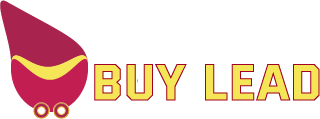echniques for Skin Dodge and burn techniques are among the most essential and precise tools used in high-end skin retouching. They enable photographers and retouchers to enhance skin texture, correct uneven tones, and sculpt features without losing the natural quality of the image. Unlike blur or frequency separation methods that can often flatten or overly smooth the skin, dodge and burn maintains detail and texture, making it a favorite in beauty, fashion, and portrait photography.
What Is Dodge & Burn? echniques for Skin
“Dodging” refers to lightening areas photo retouching service of an image, while “burning” means darkening them. This technique originates from traditional darkroom practices, where photographers would manually lighten or darken parts of a print during development. In digital retouching, dodge and burn allows for fine control over highlights and shadows, offering the ability to sculpt the face, even out skin tones, and enhance natural features with subtlety.
In skin retouching, dodge and burn is used in two main forms: micro dodge & burn and global dodge & burn.
Micro Dodge & Burn focuses on very small imperfections in skin tone—such as tiny blemishes, patchy highlights, or shadows.
Global Dodge & Burn is more about shaping the overall face structure, enhancing cheekbones, reducing distractions, and improving the overall image balance.
Why Use Dodge & Burn for Skin Retouching? echniques for Skin
The primary benefit of dodge and burn using photo editing to highlight product features techniques is their ability to preserve skin texture. Unlike blur tools or heavy retouching filters that can lead to plastic-looking skin, dodge and burn allows the natural pores and fine details to remain visible. This makes the final result more realistic and professional, especially when working with high-resolution images.
Additionally, this method provides high-level control. You’re not removing imperfections by smudging or cloning them away—instead, you are adjusting the light and dark areas to make blemishes blend in naturally. This non-destructive process helps achieve a polished but natural look.
Tools and Setup in Photoshop echniques for
In Photoshop, dodge and burn can be achieved using several techniques:
Gray Layer Method: Create a new 50% gray marketing list layer set to Soft Light or Overlay mode. Use a soft, low-opacity brush set to white for dodging and black for burning. This allows you to paint light and dark directly on the gray layer.
Curves Adjustment Layers: Create two Curves adjustment layers—one for dodging and one for burning. Mask them out and paint gently on the mask with a soft white brush where you want the effect.
Dodge & Burn Tools: Photoshop’s built-in dodge and burn tools can be used, but they are more destructive and should be used cautiously.
Regardless of method, it’s essential to use a low-flow brush (around 2-5%) and zoom in for detailed work.
Steps for Effective Skin Retouching with Dodge & Burn
Begin with a Clean Base: Remove obvious blemishes or distractions using the healing brush or clone stamp tool before starting dodge and burn.
Zoom In and Work Slowly: Work at 100% zoom or closer for micro dodge and burn to address tiny tonal inconsistencies.
Even Out Skin Tones: Gently lighten dark spots and slightly darken overly light areas, especially around under eyes, forehead, and cheeks.
Enhance Facial Contours: Use global dodge and burn to subtly emphasize natural contours like cheekbones, nose bridge, jawline, and temples.
Check Progress Frequently: Zoom out often to ensure you’re not over-editing or creating unnatural transitions.
Final Touches and Tips
Use a Check Layer: A black and white layer on top of your image can help you see tonal inconsistencies more clearly during retouching.
Stay Subtle: The goal is to enhance, not to transform. Overuse can make the face appear painted or unrealistic.
Practice Patience: Dodge and burn is time-consuming, but the payoff is a professional finish that maintains realism and texture.
